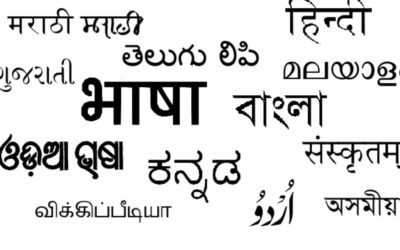While walking through various routes in Odisha, whether it be rural or urban pathways, one would truly see the gaps in development. The disparity between the development index, as compared to other states, is huge. However, there is one common thing that exists here also – TOBACCO. On each side of the road, the waste left after consuming Pan Masala, and Gutka, including the plastic covers of tobacco products, keep on whirling with the dusty wind. They seem to be rebelling against the existing law that prohibits tobacco products. Piles of such waste can also be seen on the sides of bus stops.
If we take a look at the stalls on the road, we see a garland of tobacco products that presents it as a decorative item. However, the spit stains have changed the white lines in the middle of the road to shades of red. On entering a bus, one can identify the driver, cleaner, and conductor as the victims of years of substance use. The pungent smell of tobacco lingers on, making it intolerable.
The same is true for the hospital staff, security guards, shopkeepers, farmers, daily wage labourers and more. Even police officers use it secretly as well as openly, while on duty, which makes the scenario worse. Most of these observations are from Bhubaneswar, the capital city, which was also declared ‘Tobacco smoke free city’ in 2010. It is evident that the residents are addicted to non-smoking forms of consuming tobacco.
D K Misra et al. (2020) study shows that 52.88% places in Bhubaneswar have smoking violations. 90.89% violations occur in public places and 75% in transit places. The city is careless when it comes to law implementation and in reducing second hand Smoking. (1)

The Government of Odisha Health and Family Welfare Department announced a ban on the sale of pan masala and gutka in 2013 (2). The chewing of tobacco was banned due to escalation in the number of cancer patients. Why is it then that the plastic cover wastes are visible, if the sale of items is completely prohibited?
The utilization and consumption of tobacco among the people of Odisha seems impossible to be differentiated on the grounds of age. From a young child stepping into adulthood, to an old person approaching death, stains of these products can be detected on everyone, in conglomerated hues of red and black, of pan masala, gutka, cigarette. It’s all over their teeth, lips and tongue, leaving residues of physical and mental ailments.
If you ever come to Odisha, you won’t miss the sight of stained and tobacco-corrupted smiles. They aren’t aware that their smiles are going to fade due to their habit, if it is prolonged. The dependency and addiction can lead to mental disorders which pave way to an un-organized social system and an increase in people with disability.
According to the WHO, tobacco use is linked to a number of chronic ailments, including cancer, lung disease, heart disease, and stroke. It is one of the leading causes of death and diseases in India, with about 1.35 million people dying each year. We are also the world’s second-largest tobacco consumer and manufacturer. In the country, a wide range of tobacco products are offered at extremely affordable prices.Tobacco usage is one of the most serious public health hazards worldwide. It also has significant social and economic consequences. In India, the total economic losses linked to tobacco smoking from all diseases for people aged 35 and up totalled INR 177,341 crore in 2017-18. (3)
“Earlier, people would develop cancer after chewing tobacco for about 10 to 15 years. But these days, youngsters are getting cancer within 4 to 6 years of consuming smokeless tobacco. It is high time that we stop it at the source”, said Lalatendu Sarangi, Director, Acharya Harihar Post graduate Institute of Cancer, Cuttack (4)
In urban areas, women have increased consuming alcohol and cigarettes. Women in rural areas depend on smokeless tobacco products while men use Beedi. This results in a negative influence on children, leading them to exploit themselves with tobacco. According to the report, 18% of women, compared to 5% of men, send their children to buy tobacco goods. As a result, children are introduced to tobacco at a young age. (5) The poor educational interest and performance of the youth puts their future and health in jeopardy.
Panigrahi et al. study shows that 30.6% teenagers were current tobacco users, with 44% using the smoking form and 73.6% using the smokeless form. The most frequent form of smokeless tobacco (35.8%) was betel quid, and the cigarette was the most common smoking method (55%) employed. Only 16.5 percent of adolescents had attempted to quit smoking in the previous year, whereas 65.9% expressed a wish to do so in the future.(6)


Awareness programmes have been conducted extensively in urban areas whereas rural areas are being ignored in this respect. It was found that 43.7% men and 23.7% women showed interest in coming out of their tobacco addiction but necessary services are not available. (7) What about people in rural areas, who want to quit tobacco? The lack of rehabilitation and counselling centres makes the condition unpleasant. The Odisha Government received 20.38 crore of assistance for preventing substance abuse within the last three years, and they are still lagging behind in this matter. (8)

The Odisha Government enacted The Cigarettes and Other Tobacco Products Act or COTPA in 2003 (9) which came to effect in 2013. A limited improvement is only visible in the matter of tobacco in smoke form but in smokeless form, no change is seen (10). If this is the condition of smokeless tobacco use and the number of users are also escalating day by day, the youth who are supposed to lead the country and progress will face multiple issues. The government has to focus on the prohibition of sale and use of smokeless tobacco.
“Youth Power Can Transform India”
– A.P.J. Abdul Kalam
References:
- Mishra DK, Triathy NK, Mahanty B, Buda B, Behera MK. To study smoking violations through a global positioning system-enabled mobile app, in Bhubaneswar, Odisha. Indian J Community Med [serial online] 2020 [cited 2022 Jan 21];45:66-71. Available at https://www.ijcm.org.in/text.asp?2020/45/1/66/275951
- Gutka Ban on Production & sale
- Tobacco in India
- ‘Stay away from tobacco products’ | Bhubaneswar News – Times of India
- Tobacco consumption on the rise in rural women: Report | Deccan Herald
- Panigrahi A, Sharma D, Mohapatra I. Tobacco consumption and its sociodemographic correlates among adolescents residing in slum areas of Bhubaneswar, India. Indian J Med Paediatr Oncol 2020;41:718-23
- Tobacco sale, use still high in Odisha
- Odisha has second-highest drug rehabilitation centres- The New Indian Express
- The cigarettes and other tobacco products (Prohibition of advertisement and regulation of trade and commerce, production, supply
- GATS 2




0 Comments